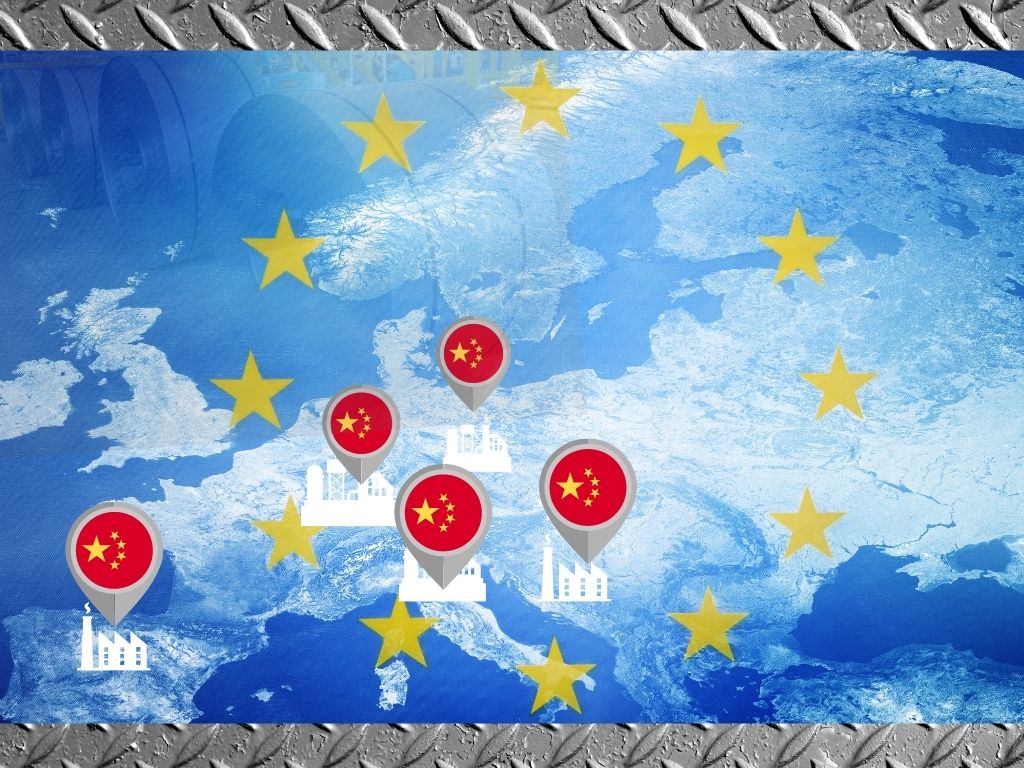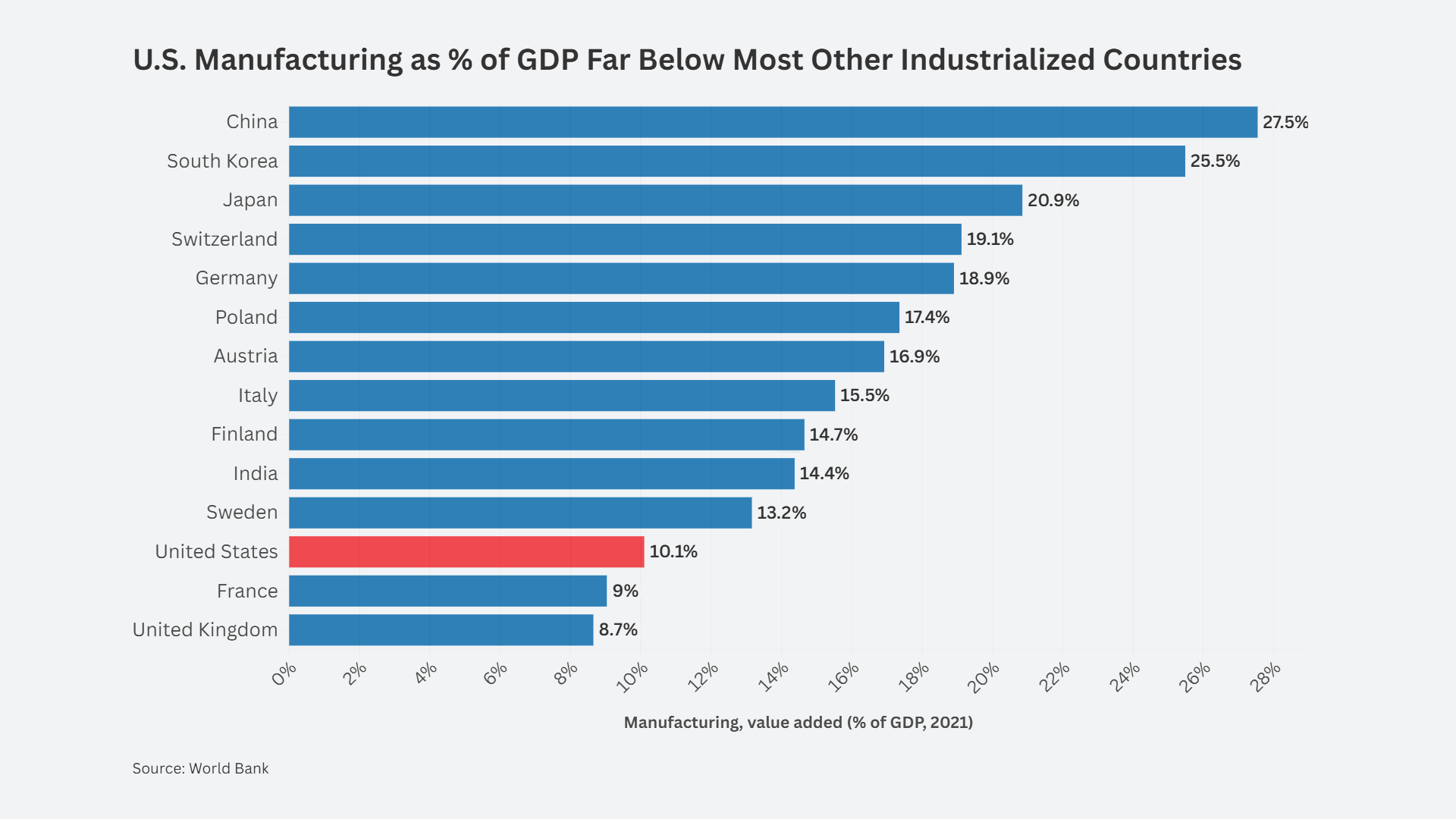Are European companies working with Chinese steel producers to transship tariffed goods to the U.S.? That’s not exactly the “work with allies” Washington would be hoping for. European steel companies have been selling stakes to Chinese firms for years, and have worked with those companies lately to circumvent the Section 232 tariffs against China steel and aluminum imposed by the Trump administration on national security grounds. In short, some Europeans are working with allies all right, only in the China steel industry.”
A study by business intelligence firm Horizon Advisors, titled “China’s European Steel Front”, published this month, says that China’s acquisition of European steel production “threatens those countries trading, partnering with…the United States.”
The Horizon Advisors report is a must read for anyone reviewing the Section 232 tariffs on steel.
The Section 232 tariff is 25% for steel, worldwide, not just China. Canada and Mexico are exempt because of USMCA. And now the Biden administration is negotiating removing them for the EU. They might offer some sort of exemption in the coming months. China will celebrate. It won’t fear rule of origin issues imposed by Washington because they are often just the local business partner with the European steel exporter anyway. But every chink in the armor of American trade protection is one more, thicker piece of metal wrapped around China’s.
Chinese encroachment into the European steel sector provides Beijing a beechhead from which to influence global prices and to reach the world’s developed markets and high-value add segments, including in the United States. Supply agreements secured through investments, joint ventures, or acquisitions in Europe lock in a role for Chinese steel in critical supply chains that stretch across the world.
Worth noting, China’s ability to overproduce and create more capacity (more widgets than anyone needs) depresses prices for those items, all to China’s benefit. The commoditization of key product lines – be it as unglamorous as a printed circuit board to polysilicon used to make microchips and solar cells – almost guarantee China an outsized role in the supply chain. Who else is going to make it at that price?
Worse yet, when China controls such a key component in a supply chain, it can hoard those goods, warehouse them and let them rot somewhere in mainland China in order to impact pricing that can be unfavorable to competitors. It can also be used to cause chokeholds in trade that China uses as leverage when discussing various diplomatic storylines with the West. The recent decision in China to reduce the production of polysilicon is an example of price manipulation to create leverage; in this case solar and tariffs on Chinese solar cells and modules.
In regard to steel, Horizon Advisory said that China’s increasing role in Europe’s steel industry – and Europe’s failure to address this issue – “compound the challenge as the United States seeks to respond to China’s market distortions. Traditional trade remedies have not been updated for China’s global presence and the exported non-market behaviors that result….Europe stands as a crucial battleground.”
“Europe continues to aid and abet Beijing’s strategy to dominate and distort the global steel industry. They cannot simply get a pass by playing the ‘allies’ card,” said Michael Stumo, CEO of CPA. “The Biden Administration needs to stay laser-focused upon protecting our steel industry, our workers and our supply chains from China’s attempt to circumvent trade rules, and from Europe’s complicity.”
Europe’s market size and its close political engagement with the U.S. make it a priority market for China to win over. Europe has long been seen as the end of the line for China’s new Silk Road.
In its report, Horizon Advisory quotes Wang Xiangsu, a retired Colonel and professor at Beihang University in his description of the China-European relationship. It’s quite telling. He says, “Building a network between Europe and the Chinese mainland will change the status quo for China.” This has long been the case as China sought to emulate America’s soft power. Europe’s business class is increasingly welcoming to this. Indeed, most of Europe’s luxury goods industry is nearly wholly dependent on the Chinese consumer, not their domestic market. Wang concludes with a knock-out punch, saying, “Europe and Asia together will pose a strategic danger to the United States, because such a composition will outweigh the United States economically and, finally, militarily.”
With friends like these…
Steel is used in nearly every piece of the manufacturing puzzle. Clearly it is the foundation of all military equipment – from ships to nuts. China notoriously produces more than it needs, or the world needs. This led to steel tariffs in the Trump era. Despite tariffs, and years of complaining about China’s overcapacity, Beijing has not address this issue.
China has 1.2 billion mouths to feed. And a labor force that it roughly three times the size of the U.S. One cannot argue with China’s goal to employ its people, many of them quite poor. No one should therefore complain about an American goal to employ its people as well, many of them increasingly poor.
To avoid tariffs and its overcapacity, China has taken its steel band on the road. They have, in essence, the Horizon report states, internationalized the problems on the mainland. Europe has been key to this internationalization.
“Doing so allows China to evade global pushback against overcapacity; capture new markets; and to capture new downstream nodes within the steel industry,” report authors wrote.
Their source is China’s own words from industry strategy papers and academic consultants to China steelmakers. They call it the “Go Out” approach to global steel manufacturing. It’s a three-pronged tactic: flood international markets with Made in China steel no one in mainland China wants; establish production bases overseas to avoid tariffs and lock in new markets; and lastly – M&A. This is where the Europeans come in.
Whenever the U.S. imposes trade remedies on China steel, China steel turns to Europe as an end-around those remedies, the Horizon Advisory report said.
The U.S. will be able to use the Section 232 tariffs against Europe should the EU still be considering its investment deal with China. That deal has been put on pause due to the human rights issue surrounding the Uyghurs and other ethnic minorities of Xinjiang province.
Should the U.S. buy more European steel, some of it made in partnership with Chinese firms there, that gives China more opportunities to export its mainland steel somewhere in the world. As long as their excess capacity remains, global prices will be depressed. And that’s a problem that stems from China.
The U.S. wants to seal itself off from that global supply glut. And China wants to penetrate that seal and find more places to stuff their products. Europe, apparently, is letting them.













